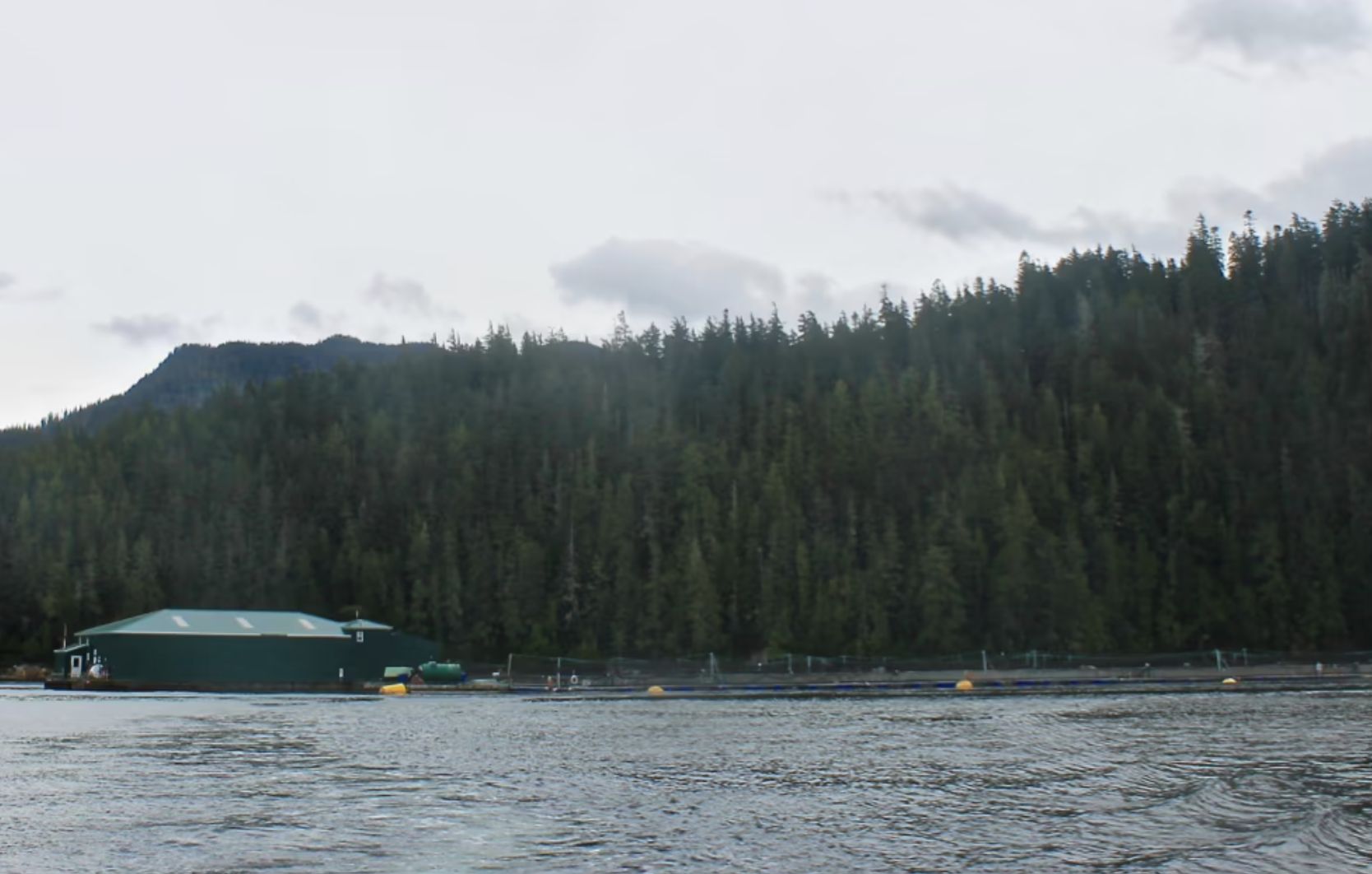Saving the Pacific Salmon
Guest blogger Griffin Kelly shares her research and stories from the rugged west coast. She's currently exploring the impact of aquaculture on community in the Broughton Archipelago.
Salmon Coast was founded by biologist Alexandra Morton, who first noticed the influx of sea lice into the environment. Wild salmon pick up lice during their time in the open ocean. Farms are infected by wild salmon during the in-migration to rivers. Adult salmon return to the rivers to spawn, and then die off. The lice die off with them. However, fish farms act as incubators for sea lice over the winter; the lice remain in the system because they have constant, static hosts. When juvenile salmon emerge from rivers in the spring into the ocean, they are exposed to sea lice at an unnaturally early stage (Marty 2010). This can result in harmful effects on juvenile wild salmon populations (Krkošek 2017.)
Burdwoods farm
Salmon Coast carries out the longest-running juvenile salmon monitoring program, which is in its 17th year. Each week, we go out and take samples of juvenile salmon from three sites adjacent to fish farms. The sites are Wicklow, in Fife Sound, Glacier, in Tribune Channel, and Burdwoods, in the Burdwood Group islands. This is an important chance for us to interact with the salmon at various stages in their growth cycle; at the beginning of the season the parr are only 30mm long, and by June, the smolts are larger than 100mm.
We set beach seine nets to collect 100 fish at each site, 50 pink salmon and 50 chum salmon. Pink and chum salmon school together, and are the most prevalent species in this area. These fish are placed in plastic bags with seawater in order to be measured and examined. Counts of lice per fish are recorded, along with observations of other factors, such as environmental stressors. The salmon are released back into the ocean. This process is continued for the duration of the salmon run, starting in early April and ending late June. On May 4th, we visited the usual sites, and were joined by Alex Morton, as she conducted her own sampling.
Collected salmon await examination.
A salmon is measured by a volunteer.
Examining a chum salmon for sea lice with a hand lens.
This independent data set is a crucial tool to demonstrate the measured and changing effects of sea lice and aquaculture on wild salmon. It has been used in multiple papers and reports by researchers since 2001. The weekly monitoring program is a collaborative effort, as it relies on volunteers, researchers and community members, including members from the local First Nations.
Krkošek, Martin. "Population biology of infectious diseases shared by wild and farmed fish." Canadian Journal of Fisheries and Aquatic Sciences 74.4 (2017): 620-28. Web.
Marty, G. D., S. M. Saksida, and T. J. Quinn. "Relationship of Farm Salmon, Sea Lice, and Wild Salmon Populations." Proceedings of the National Academy of Sciences 107.52 (2010): 22599-2604. Web.
Schreiber, Dorothee, and Dianne Newell. "Negotiating TEK in BC Salmon Farming: Learning from Each Other or Managing Tradition and Eliminating Contention?." BC Studies: The British Columbian Quarterly 150 (2006): 1-17.





